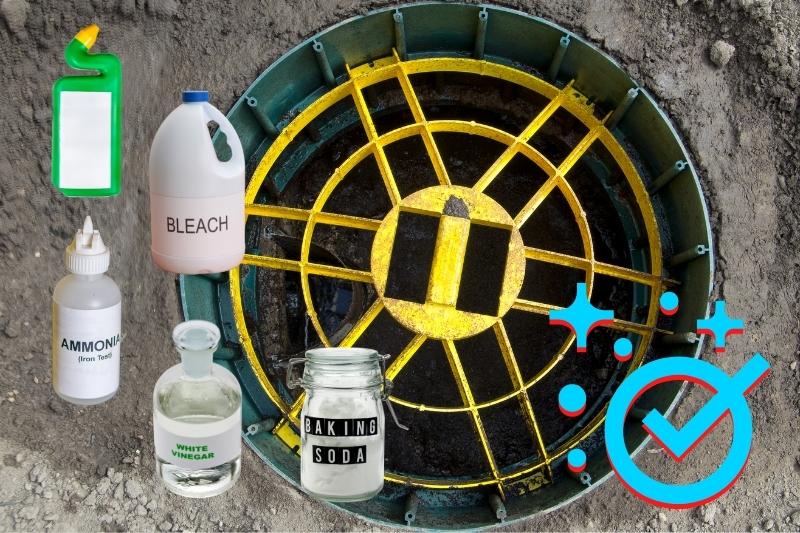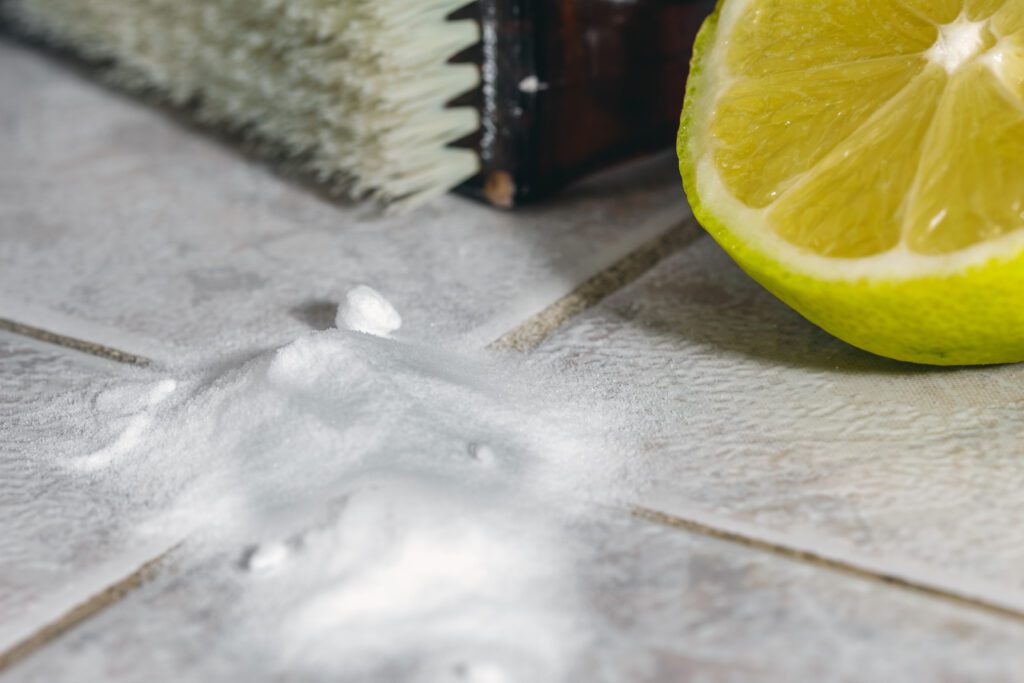Have you ever wondered if it’s safe to pour soda down the drain if you have a septic tank? With many households relying on septic systems for waste disposal, it’s important to know what can and cannot be poured down the drain. In this article, we will explore the effects of pouring soda down the drain and whether it can harm or disrupt the functioning of your septic tank. So, grab a soda and let’s find out!

What is a septic tank
A septic tank is an underground wastewater treatment system commonly used in rural areas or properties not connected to a municipal sewer system. It is designed to collect, treat, and dispose of household wastewater. This self-contained system consists of a large underground tank that receives wastewater from various sources, such as toilets, sinks, showers, and laundry machines.
Components of a septic tank
A septic tank typically consists of several essential components that work together to handle wastewater effectively. These components include:
- Inlet pipe: This is where household wastewater enters the septic tank from the main sewer line.
- Septic tank: The septic tank is a large, watertight container made of concrete, fiberglass, or plastic. It holds the wastewater long enough for solids to settle and oils to float.
- Baffle: The baffle is a partition that prevents the scum layer from escaping into the outlet pipe.
- Outlet pipe: Once the wastewater has undergone treatment in the septic tank, it exits through the outlet pipe, which directs it to the drain field.
- Drain field: The drain field, also known as a leach field, is a network of perforated pipes buried underground. It allows the treated wastewater, also known as effluent, to safely percolate into the soil and undergo further purification.
- Soil: The soil in the drain field acts as a natural filter, removing harmful bacteria, viruses, and pollutants from the effluent before it reaches groundwater.
How a septic tank works
A septic tank operates on a simple yet effective principle of separating solids, liquids, and scum to treat wastewater naturally. The process can be summarized as follows:
- Wastewater enters the septic tank through the inlet pipe.
- The heavier solids, such as sludge, settle at the bottom of the tank, forming a layer of sediment.
- Lighter substances, such as oils and grease, rise to the top, forming a layer of scum.
- The partially treated liquid, known as effluent, remains in the middle layer and flows towards the outlet pipe.
- The effluent is directed to the drain field, where it undergoes further purification as it filters through the soil, removing harmful bacteria and other contaminants.
Now that we understand the basics of septic tanks, let’s dive into the importance of proper care to ensure their optimal functioning.
Why is proper care important
Proper care and maintenance of septic tanks are crucial for several reasons. Neglecting their upkeep can lead to costly repairs, potential health hazards, and environmental pollution. Here are two key aspects to consider:
Impact of improper disposal on septic tank
Improper disposal practices can significantly impact the functioning of a septic tank. Substances that are not biodegradable or take a long time to decompose can accumulate over time, causing clogs and blockages in the system. Additionally, excessive water usage or the introduction of non-septic-friendly materials can overwhelm the tank’s capacity, leading to backups and failures.
The role of bacteria in septic tanks
Bacteria play a vital role in the proper functioning of septic tanks. These naturally occurring microorganisms break down organic matter and help purify the wastewater. However, introducing substances that disrupt or kill these bacteria can hinder the treatment process. Maintaining a healthy bacterial balance is essential for the overall efficiency and longevity of the septic system.
To understand the potential effects of pouring soda down the drain, it is important to explore the composition of soda itself.

Understanding the composition of soda
Soda is a popular beverage consumed worldwide. It typically consists of carbonated water, sweeteners, flavorings, and additives. Understanding the ingredients and acidity levels in soda helps us evaluate its impact on septic tank bacteria.
Ingredients in soda
Soda commonly contains ingredients such as:
- Carbonated water: This is the main component of soda, providing the fizziness.
- Sugar or artificial sweeteners: These add the characteristic sweetness to the drink.
- Flavorings: Various natural or artificial flavorings are added to give soda its distinct taste. Common flavors include cola, citrus, fruit, and root beer.
- Additives and preservatives: Some sodas contain additives like caffeine, phosphoric acid, citric acid, and sodium benzoate to enhance flavor, preserve freshness, or adjust acidity.
Acidity levels in soda
One significant factor to consider is the acidity of soda. Most sodas have a low pH level, making them acidic in nature. The acid contributes to the tangy taste and acts as a preservative. However, the acidity can potentially affect the microbial balance in a septic tank, where a specific pH range is necessary for optimal bacterial activity.
With the basic understanding of soda composition, let’s explore its effects on septic tank bacteria and the importance of proper disposal methods.
Proper disposal methods for soda
Proper disposal of soda can help prevent potential issues with your septic tank. Here are some guidelines to ensure soda does not negatively impact your system:
Limiting soda disposal into the septic system
While it is generally recommended to minimize the disposal of any non-biodegradable substances into a septic tank, pouring excessive amounts of soda can be particularly detrimental. Avoid a consistent inflow of soda by limiting the frequency and quantity poured down the drain.
Alternatives to pouring soda down the drain
If you want to dispose of soda but are concerned about your septic tank’s health, consider alternate options:
- Pouring it into the regular trash: Letting the soda go flat and pouring it into a sealed container or bag before disposing of it in the trash is a safer option.
- Recycling or reusing: If the soda is still sealed, you can consider donating it or recycling the container if applicable. Check local recycling guidelines for proper disposal methods.
Taking these precautions will not only protect your septic tank but also contribute to more sustainable waste management practices.

Other factors to consider
While soda disposal is an important aspect to address, there are other factors you should consider for the overall health and maintenance of your septic system. These include:
Frequency of soda disposal
The frequency at which you dispose of soda or any other substance down the drain can impact the septic tank. The more frequently you introduce non-biodegradable or harmful materials, the higher the risk of disrupting the delicate balance of bacteria within the system.
Overall household waste management
Proper waste management is essential to maintain a healthy septic system. Avoid flushing non-biodegradable items, such as wipes, feminine hygiene products, or plastics, as they can cause blockages and damage the septic tank.
Septic tank maintenance and pumping
Regular maintenance and pumping of your septic tank are vital to its longevity and functionality. A professional inspection every 3-5 years, along with timely pumping to remove accumulated solids, can prevent potential issues and ensure optimal performance.
By keeping these factors in mind, you can promote the overall health and efficiency of your septic tank.
Consequences of pouring soda down the drain
Pouring soda down the drain can have several negative consequences on your septic tank. It is important to understand these potential impacts to make informed decisions about its disposal.
Negative impact on septic tank bacteria
The acidity of soda can disrupt the natural pH balance within the septic tank, potentially harming the beneficial bacteria responsible for breaking down organic matter. This disruption can impede the wastewater treatment process and lead to a less effective and efficient septic system.
Potential clogging and blockages
The sugars and additives present in soda can contribute to the formation of clogs and blockages within the septic tank pipes. Over time, these substances can accumulate and hinder the flow of wastewater, leading to backups, foul odors, and even system failures.
Effect on drain field
If untreated soda or soda residues reach the drain field, they can introduce excess sugars and other substances that may alter the soil’s microbial balance. This imbalance can result in reduced filtration and purification capabilities of the soil, potentially compromising its ability to treat and purify the effluent.
To avoid these potential issues, it is recommended to explore alternatives to pouring soda down the drain.

Effects on septic tank health
Pouring soda down the drain can have broader implications on the overall health and performance of your septic tank. Here are a couple of ways it can impact the system:
Altering the balance of bacteria
Soda’s acidity can disrupt the ecological balance of bacteria within the septic tank, hindering their ability to break down organic matter efficiently. This imbalance can result in slower decomposition of solids, leading to the buildup of scum and sludge and increasing the need for more frequent septic tank pumping.
Reduced functionality and efficiency
The accumulation of sugars, additives, and acid residues from soda can lead to clogging, blockages, and damage to the septic tank and drain field. These issues can significantly impact the system’s functionality and efficiency, potentially requiring costly repairs or even a full system replacement.
Given the potential consequences, it is advisable to seek alternatives to pouring soda down the drain.
Alternatives to pouring soda down the drain
If you have excess soda that you need to dispose of, here are a couple of alternatives to consider:
Recycling or reusing soda
If the soda is unopened and within its expiration date, you can consider donating it to a local organization or checking if your community has a soda bottle recycling program. Reusing or recycling soda reduces waste and minimizes the potential impact on septic systems.
Proper disposal in the regular trash
Allowing the soda to go flat and pouring it into a sealed container or bag before disposing of it with regular trash can help prevent possible harm to your septic tank. Remember to check local regulations for proper waste disposal guidelines.
By implementing these alternatives, you can ensure the well-being of your septic tank while adopting more environmentally friendly practices.

Educating household members
Proper waste disposal is a collective responsibility within a household. Educating and raising awareness among household members about the importance of septic tank care and eco-friendly practices is crucial.
Importance of proper waste disposal
Emphasize to family members that maintaining a healthy septic tank contributes to the cleanliness, safety, and efficiency of their home. Explain the potential consequences of improper waste disposal and the impact it can have on the environment.
Promoting eco-friendly practices
Encourage eco-friendly practices such as reducing waste, recycling, and reusing items whenever possible. By minimizing the amount of waste generated and adopting greener behaviors, you can reduce the strain on your septic system and contribute to a healthier environment.
Other substances to avoid
While soda disposal is a significant concern, there are other substances that should be avoided to maintain the optimal functioning of your septic system. These substances include:
Toxic chemicals
Strong chemicals, such as bleach, drain cleaners, and pesticides, can harm the beneficial bacteria in your septic tank. Avoid excessive use of these chemicals or find eco-friendly alternatives to protect the delicate microbial balance.
Grease and oils
Grease, fats, and cooking oils should never be poured down the drain. They solidify and can clog pipes, leading to backups and damage to the septic system.
Non-biodegradable materials
Items that do not decompose naturally, such as plastics, wipes, and sanitary products, should not be flushed down the toilet or disposed of in the sink. These non-biodegradable materials can cause blockages and impair the septic system’s ability to function effectively.
By being mindful of these substances, you can maintain a healthier and more efficient septic tank.
In conclusion, pouring soda down the drain if you have a septic tank is not advisable due to the potential negative consequences it can have on your system. Understanding the composition of soda, its impact on septic tank bacteria, and implementing proper disposal methods are important steps to protect the health and longevity of your septic tank. By educating household members and adopting eco-friendly practices, you contribute to a sustainable waste management system that benefits both your home and the environment. Remember, a little care goes a long way in maintaining a well-functioning septic tank.
